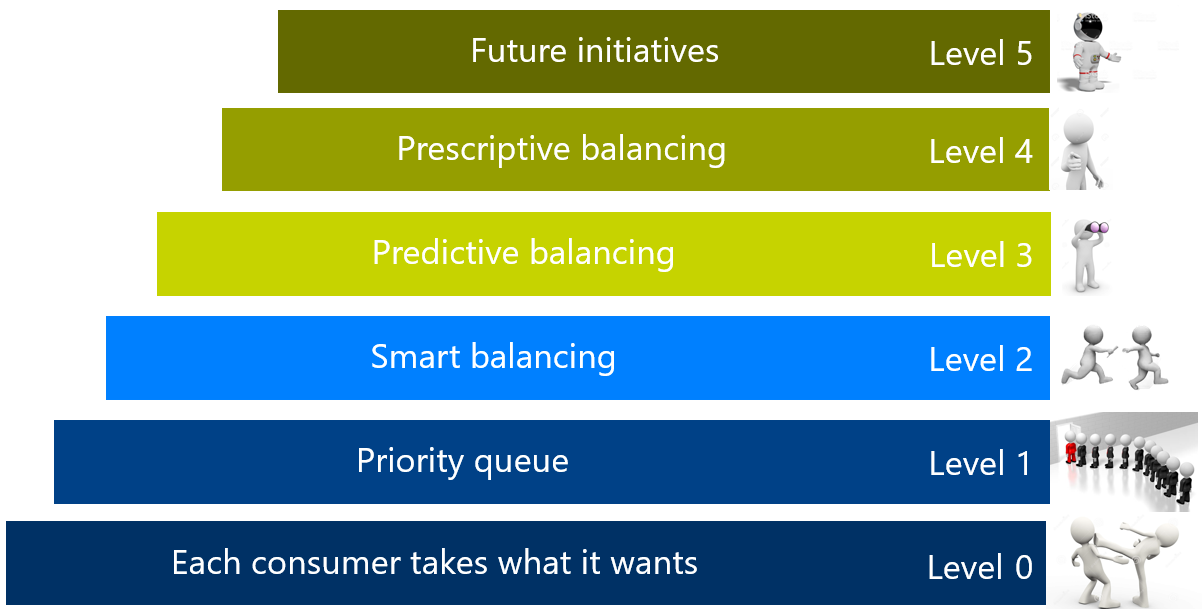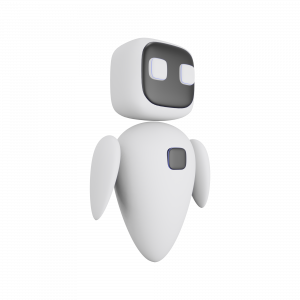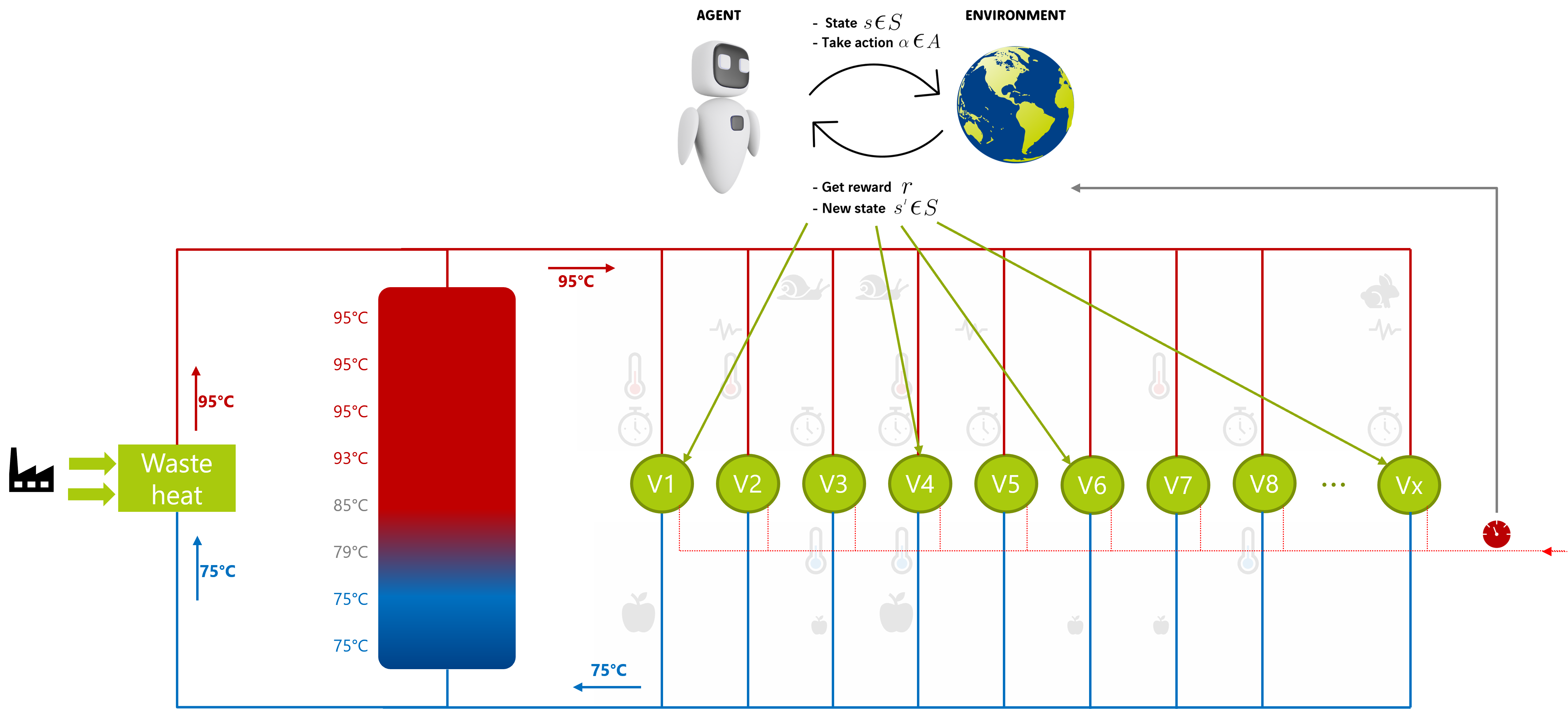How does it work?
Different levels can be worked on in order to move, step by step, to a better but also a more advanced balancing.

Where is the difference made?
Load balancing involves working at different levels to safely make progress and depending on the needs of the customer. Balancing these loads makes better use of the energy resource.
This principle deals with the line of thought that is broadly applicable regardless of the application. Where there is a need to balance
consumers, especially when concurrency is involved, this principle will be able to prove its worth.
Advantages Smart Hot Water Grid
- Work at different levels according to the maturity of the installation
- Balance your loads on a resource in an optimal way
- Guarantees availability of energy to high priority consumers
- Helps you save on energy
Reinforcement Learning with Howest
It may be impossible to have a human find the ideal strategy. Therefore, we let an Agent search for this strategy by having the Agent take actions in a simulation environment.
An action is to control, not control or partially control all participants.
This results in a certain consumption of the hot water network.

All the heat that the consumers need extra is provided by a heat exchanger on steam. Since steam is much more expensive than reusing waste heat, our goal is to teach the agent to use as little steam as
possible. Good actions, with little steam consumption, are rewarded and bad actions are punished. In this way, the Agent learns more and more about the ideal strategy to balance the heat grid in all possible scenarios.
After the Agent is well and truly trained in the simulation environment. Then it is set up in parallel in production. That is, we let the Agent choose actions without executing them. If this also goes well, then the Agent is given the ability to execute actions in production as well.
At all times, the Agent is monitored. Deviations in performance are often due to changes in the environment. At that moment, or preferably in advance, the Agent is retrained to take the new situation into account.



